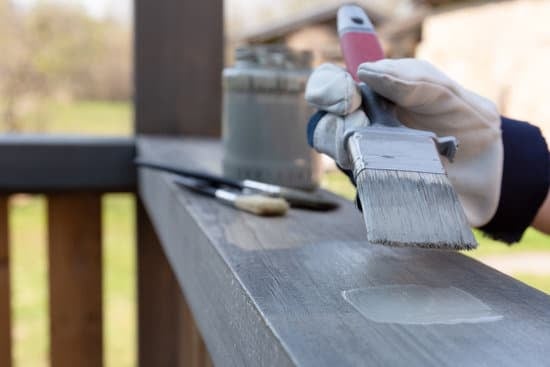Proving home improvements is crucial for various purposes, whether it’s to ensure your property’s value, seek reimbursement from insurance claims, or provide evidence in legal matters. However, one common challenge that homeowners face is the lack of receipts for their home improvement projects. This can have serious consequences when attempting to prove the work that has been done.
Receipts serve as tangible evidence of expenses incurred and work performed. They provide a clear paper trail that validates the investment made into improving your home. Having receipts in your possession not only demonstrates your financial commitment but also offers stronger credibility in future situations where proof is required. Without receipts, it becomes more challenging to establish the legitimacy and value of your home improvements.
Fortunately, there are alternative methods to prove home improvements when receipts are unavailable. These alternatives can include photographs, videos, bank statements, warranties and guarantees provided by contractors or service providers involved in the project. These forms of documentation can be valuable substitutes when it comes to providing evidence of work completed and money invested.
In this article, we will explore how you can effectively prove home improvements without receipts. We will discuss the significance of having receipts and delve into alternative forms of proof that can be utilized in different situations.
Additionally, we will provide tips on keeping detailed records for home improvements and how to communicate with contractors to obtain proof of their work. By implementing these strategies and utilizing various sources of evidence, you will be better equipped to establish the validity of your home improvements even without physical receipts.
Understanding the significance of receipts in proving home improvements
Receipts play a crucial role in proving home improvements. They serve as concrete evidence of expenses and work done, providing credibility and documentation for future legal or insurance purposes. Understanding the significance of receipts is essential for homeowners who want to prove the value and legitimacy of their home improvement projects.
Concrete Evidence of Expenses and Work Done
Receipts are important because they provide concrete evidence of the expenses incurred for home improvements. When documenting these expenses, it is important to keep track of all relevant receipts, including those for materials, labor costs, and any additional fees. These receipts not only show the amount spent but also help establish a clear record of what specific work was done on the property.
Having detailed receipts can be particularly valuable if disputes arise with contractors or service providers regarding the scope of work or payment amounts. By presenting receipts as evidence, homeowners can clearly demonstrate how much money was invested in improving their homes.
Advantages for Future Legal or Insurance Purposes
Receipts also have significant advantages for future legal or insurance purposes. In situations such as selling a house or applying for loans, having documented proof of home improvements can increase property value and buyers’ confidence. Receipts provide tangible evidence that shows the investments made towards improving the condition, quality, or aesthetics of a property.
Additionally, insurance claims often require proof of damages caused during home improvement projects. Without proper documentation through receipts, homeowners may encounter difficulties in getting compensated by insurance companies for repairs or replacements. This is especially true when it comes to damage resulting from faulty workmanship or materials used during the improvement process.
While receipts are crucial in proving home improvements, there are alternative options available when original receipts are missing or unavailable. Exploring these alternatives will be discussed in subsequent sections to provide homeowners with various options to prove their investments in enhancing their properties without relying solely on receipts.
Alternatives to receipts when proving home improvements
When it comes to proving home improvements, receipts are typically the go-to method of providing concrete evidence. However, there may be instances where you find yourself lacking receipts for various reasons. In these situations, knowing alternative methods can help you still showcase your home improvements without the traditional paper trail. This section explores alternatives to receipts when proving home improvements and offers suggestions on how to effectively utilize these alternatives in different situations.
Exploring Alternative Forms of Proof
While receipts offer undeniable proof of expenses and work done, there are other forms of evidence that can serve as substitutes when receipts are unavailable. One effective alternative is through photographs or videos. Documenting your home improvement projects before, during, and after completion provides visual evidence of the work that has been done.
Another option is utilizing bank statements or credit card statements as proof of payment for materials or services related to your home improvements. These financial records can demonstrate your investment in making enhancements to your property.
Making the Most of Alternative Proofs
When leveraging alternative forms of proof, it is important to ensure they are useful and effective in supporting your claims. Here are some tips on how to make the most out of these alternatives:
- Organize and label: Keep your photographs and videos organized with labels specifying the date, type of project, and relevant details. This way, it will be easier to refer back to them if necessary.
- Include timestamps: If possible, enable timestamp features on your camera or smartphone when taking photographs or videos. This adds an additional layer of authenticity by providing a clear timeline of when the improvements were made.
- Be specific with descriptions: When using bank or credit card statements as proof, make sure to highlight the transactions related to your home improvement projects clearly. Include details such as vendor names, transaction dates, and amounts paid.
- Add context: To further strengthen your case without receipts, provide additional information alongside your alternative proofs. This can include contractor agreements, project plans or blueprints, and any permits or licenses obtained for the home improvement work.
By utilizing alternative forms of proof effectively and ensuring they are properly organized and supported by related documents, you can successfully prove your home improvements even without receipts. Remember to always communicate with contractors, preserve warranties and guarantees, gather testimonials and references, and utilize expert opinions when necessary. With these strategies in place, you will be well-equipped to demonstrate the value and impact of your home improvement projects.
Keeping detailed records for home improvements
One of the most effective ways to prove home improvements without receipts is by maintaining thorough records of all the projects undertaken. While receipts provide concrete evidence of expenses and work done, they are not always available or can be easily misplaced. Therefore, it is crucial to create and organize a record-keeping system that includes all relevant information about each home improvement project.
There are several key elements to include in detailed records for home improvements. First, it is important to document the start and end dates of the project, as well as any delays or interruptions that may have occurred. This information can help establish a timeline and demonstrate the commitment to completing the improvements.
Additionally, keeping a record of all expenses related to the project is essential. This includes not only materials and labor costs but also any permits or inspections required. It is also advisable to save copies of invoices or estimates received from contractors or suppliers.
Another crucial aspect of detailed records for home improvements is documenting any changes made during the project. This can include design modifications, adjustments to timelines, or unforeseen issues encountered along the way. By noting these changes, homeowners can provide a clear picture of the work that was done and why it may deviate from initial plans.
By maintaining detailed records for home improvements, homeowners can effectively prove their investments in their homes even without having receipts readily available. These records serve as a comprehensive account of each project undertaken and can be used as supporting evidence when needed. Whether for legal purposes, insurance claims, or potential sales in the future, having well-organized records will provide homeowners with confidence and proof of their efforts.
| Elements | Description |
|---|---|
| Start and end dates | Record the duration of each project and any delays encountered |
| Expenses | Document all costs related to the project, including materials, labor, permits, and inspections |
| Changes made | Note any modifications or unexpected issues that arose during the project |
Communicating and collaborating with contractors and service providers
One of the key aspects of proving home improvements without receipts is effective communication and collaboration with contractors and service providers. When it comes to documenting and providing evidence of the work done, having a clear line of communication with these professionals can make a significant difference. Here are some strategies to consider when communicating and collaborating with contractors and service providers:
- Request detailed invoices and receipts: While you may not have the original receipts for your home improvements, you can still ask contractors or service providers for detailed invoices. These documents should include a breakdown of the expenses incurred, materials used, labor costs, and any other relevant information. This way, even if you don’t have the physical receipt, you can rely on these invoices as proof of the work done.
- Keep a record of all communications: It is important to maintain thorough documentation of all communications with contractors and service providers throughout the home improvement process. This includes emails, text messages, phone call logs, and even in-person conversations. These records can serve as valuable evidence in case you need to prove the details or progress of the project.
- Obtain signed agreements or contracts: Whenever possible, it is advisable to have written agreements or contracts in place before starting any home improvement project. These agreements should specify details such as scope of work, timeline, payment terms, and any warranties or guarantees offered by the contractor or service provider. Having signed agreements can provide solid evidence of what was agreed upon between both parties.
- Seek recommendations from reputable sources: Before hiring any contractor or service provider for your home improvement project, do thorough research and seek recommendations from trusted sources such as friends, family members, or online review platforms. Working with reliable and reputable professionals increases your chances of receiving proper documentation for your home improvements.
- Schedule periodic progress inspections: Throughout the course of your home improvement project, arrange for periodic inspections to be conducted by either yourself or a third-party inspector if necessary. These inspections can help confirm the progress and quality of the work being done, and you can document your findings through photographs or written reports to serve as proof later on.
By effectively communicating and collaborating with contractors and service providers, you can enhance your ability to prove home improvements without receipts. Utilizing these strategies will not only help in gathering alternative forms of evidence but also establish a strong foundation for successful home improvement projects. Remember to maintain organized records and keep an open line of communication throughout the process.
Utilizing warranties and guarantees as proof
When it comes to proving home improvements without receipts, one often overlooked but valuable form of evidence is warranties and guarantees. Warranties and guarantees provided by contractors or manufacturers can serve as essential proof of the work that has been done on your home. This section will explore the significance of warranties and guarantees as evidence and provide tips on how to effectively use them to prove home improvements.
Warranties and guarantees hold great value in establishing the legitimacy of home improvement projects. These documents not only highlight the confidence that contractors or manufacturers have in their work or products, but they also offer assurance that specific improvements have been made. The presence of a warranty or guarantee provides a level of credibility that can be utilized when proving home improvements.
To utilize warranties and guarantees effectively, make sure to keep these documents organized and readily accessible. Create a dedicated folder or file for all warranty and guarantee paperwork related to your home improvement projects. In addition to having physical copies, scan these documents and store them digitally, ensuring easy access in case physical copies are lost or damaged.
When presenting warranties or guarantees as evidence, be prepared to explain the details and terms included in these documents. Understand what is covered under each warranty or guarantee so you can confidently discuss the specific aspects of the work that was done. If possible, provide additional supporting documentation such as photographs or videos that show the completed improvements covered by the warranty or guarantee.
It’s important to note that while warranties and guarantees are valuable forms of proof, they may not always be available for every type of home improvement project. Some smaller projects may not come with warranties or guarantees from contractors or manufacturers. In such cases, exploring alternative forms of proof like photographs, videos, bank statements, contracts with service providers, or even written testimonials from satisfied clients can help support your claims.
By utilizing warranties and guarantees effectively when proving home improvements without receipts, you can strengthen your case significantly. Ensure you maintain thorough records of all warranty and guarantee paperwork, keeping them organized and accessible. Remember to provide additional supporting evidence when possible and consider alternative forms of proof if warranties or guarantees are not available. With these strategies in place, you will be well-equipped to demonstrate the work that has been done on your home.
Gathering testimonials and references from trustworthy sources
One effective way to prove home improvements without receipts is by gathering testimonials and references from trustworthy sources. Testimonials and references can provide strong evidence of the work done, as they come directly from satisfied clients or individuals who have witnessed the improvements firsthand. These testimonials and references can help establish credibility and support claims of the completed home improvements.
Testimonials are statements or comments given by previous clients or customers who have availed the services of a contractor or service provider. They serve as a personal recommendation and vouch for the quality of work performed. Testimonials may involve details about specific projects, including the scope of work, level of satisfaction, and any outstanding achievements or positive experiences.
References, on the other hand, are contacts provided by contractors or service providers who can verify the completion of home improvements. These references could be previous clients who are willing to speak with interested parties about their experiences working with a particular contractor or service provider. References can offer valuable insights into the professionalism, reliability, and quality of work of a contractor.
When gathering testimonials and references, it is important to ensure that they come from trustworthy sources. Seek recommendations from friends, family members, neighbors, or colleagues who have recently completed similar home improvement projects. Additionally, consider asking contractors or service providers for a list of references from their past clients.
| Gathering Testimonials | Gathering References |
|---|---|
| Obtain statements from previous clients | Ask contractors for contact information of satisfied clients |
| Include details about projects and level of satisfaction | Contact previous clients to discuss their experiences |
| Seek recommendations from friends or family members | Verify credibility and quality of work from references |
Researching and referencing industry standards and regulations
When it comes to proving home improvements without receipts, one effective strategy is to research and reference industry standards and regulations. By understanding and adhering to these guidelines, homeowners can provide concrete evidence of the work done on their property. Here are some key points to consider when using industry standards and regulations as proof:
- Familiarize yourself with the relevant standards: Whether you’re undergoing a major renovation or a simple repair, different industries have specific standards and regulations that apply to various aspects of home improvement projects. For example, if you’re working on electrical upgrades, knowing the National Electrical Code (NEC) guidelines can help support your claim of improvements made. Research these standards and regulations before starting any project to ensure that you are aware of the required documentation.
- Use industry guidelines as evidence: Industry standards often outline specific procedures or materials recommended for different types of home improvements. When proving your case without receipts, referencing these guidelines can provide legitimacy to your claims. For instance, if you have replaced windows in accordance with energy efficiency ratings set by organizations like ENERGY STAR, you can use those ratings as evidence of upgrades made.
- Consult professionals in the field: If you are unsure about which industry standards or regulations apply to your particular project, don’t hesitate to consult professionals in the field. Architects, engineers, or contractors with expertise in specific areas can offer valuable insights into the relevant guidelines that should be followed for your home improvements. Their expertise can also strengthen your case when presenting evidence without receipts.
- Document compliance with industry standards: To effectively utilize industry standards and regulations as proof of home improvements, it is crucial to keep detailed records demonstrating how your project aligns with them. Take photographs throughout each stage of the project to show compliance with specific requirements outlined in these standards. Additionally, include any supporting documentation such as permits or certificates obtained during the process that align with applicable regulations.
By researching and referencing industry standards and regulations, homeowners can establish a strong foundation for proving their home improvements without receipts. Not only does this strategy demonstrate a commitment to quality work, but it also shows that proper procedures were followed during the project. Remember to consult professionals, keep thorough documentation, and use visual evidence to support your case effectively. By employing these techniques, you can enhance your chances of successfully proving the value of your home improvements.
Expert opinions and appraisals as evidence
Expert opinions and appraisals can be invaluable when it comes to proving home improvements without receipts. These professional assessments provide an objective evaluation of the work that has been done, which can serve as strong evidence in situations where receipts are not available.
When seeking expert opinions and appraisals, it is important to find credible and reputable individuals who specialize in the specific area of home improvement that you are trying to prove. Look for professionals who have relevant certifications, memberships in industry organizations, and positive reviews or references from previous clients.
To find experts, you can start by asking for recommendations from friends, family, or neighbors who have undergone similar home improvement projects. Online directories and review websites can also be helpful resources for finding professionals in your area.
Once you have identified potential experts, reach out to them and explain your situation. Provide any documentation or evidence that you do have, such as photographs or videos of the improvements. Request a comprehensive assessment of the work done along with a detailed report outlining their findings. This report can then be used as evidence to support your claim of home improvements.
It is worth noting that expert opinions and appraisals may come at a cost. However, considering their significance in proving home improvements without receipts, this investment is often worthwhile. Additionally, keep in mind that these assessments may take some time to complete, so it is important to plan accordingly when using this strategy.
By utilizing expert opinions and appraisals as evidence of home improvements, homeowners can strengthen their case even without traditional receipts. These professional evaluations provide an unbiased evaluation of the work done and carry significant weight in legal and insurance settings.
Final tips and advice for effectively proving home improvements without receipts
In conclusion, proving home improvements without receipts may seem like a challenging task, but it is not impossible. Throughout this article, we have explored various alternatives to receipts and strategies for effectively proving home improvements. By following these final tips and advice, homeowners can confidently provide evidence of their home improvement projects when needed.
Firstly, it is crucial to keep detailed records of all home improvement projects. This includes documenting expenses, timelines, and any changes made during the process. By organizing these records in a systematic manner, homeowners can easily retrieve information and present it as proof if necessary.
Additionally, establishing clear communication with contractors and service providers plays a vital role in proving home improvements without receipts. It is essential to discuss the importance of obtaining proof of work upfront and clarify expectations regarding documentation. Collaborating with reliable and reputable professionals ensures that there will be no disagreements or challenges later on when trying to prove the improvements.
Utilizing warranties and guarantees can also serve as valuable evidence. Homeowners should make sure to understand the terms and conditions of these agreements and keep copies of relevant documents. Warranties and guarantees demonstrate that work was done by professionals in a legitimate manner.
Furthermore, gathering testimonials and references from trustworthy sources can significantly enhance the credibility of claims regarding home improvements. Satisfied clients can vouch for the quality of work done by contractors or service providers corroborating the documented evidence.
Lastly, researching industry standards and consulting expert opinions or professional appraisals adds additional weight to claims of home improvements. By referencing industry guidelines or obtaining assessments from credible experts in the field, homeowners strengthen their case significantly.
Frequently Asked Questions
Can I claim home improvements without receipts?
Generally, in order to claim home improvements on your taxes, you will need to provide receipts as proof of the expenses incurred. Receipts serve as evidence that the money was indeed spent on improving your home. However, there may be instances where you can claim home improvements without receipts, but it becomes a more complex process.
In such cases, alternative forms of documentation like credit card statements or bank statements showing the purchase amount and date, along with detailed descriptions of the improvements made, may be acceptable. It’s important to note that without proper documentation, claiming home improvements without receipts could possibly raise red flags during an IRS audit.
How can I prove my expenses without receipts?
While having receipts is generally the most reliable way to prove your expenses for tax purposes, it is possible to provide other types of documentation as proof if you do not have receipts. One option is to use bank or credit card statements that show the transactions related to your expenses. By highlighting and providing explanations about specific transactions on these statements, you can demonstrate that they were indeed business-related or qualified expenses.
Additionally, canceled checks may also serve as evidence of payment for certain expenses. In case no tangible evidence is available, maintaining a detailed record such as a logbook detailing each expense incurred along with supporting documents like invoices or estimates can help substantiate your claims.
How do you prove home improvement to the IRS?
To prove home improvement expenses to the IRS, you should gather and maintain all necessary documentation related to the projects completed. Required documentation includes any contracts or agreements with contractors outlining the scope of work and associated costs. Moreover, invoices and receipts from suppliers can serve as proof of materials purchased for home improvement purposes.
Additionally, keeping records of any permits or licenses obtained might also be necessary depending on the nature of the renovation project. It is advisable to document before-and-after photographs to showcase visual evidence of improvement made within your home during renovations or upgrades. By compiling thorough documentation that demonstrates both financial expenditures and physical changes made within your property, you can sufficiently prove your home improvement expenses to the IRS.

I’m thrilled to have you here as a part of the Remodeling Top community. This is where my journey as an architect and remodeling enthusiast intersects with your passion for transforming houses into dream homes.





